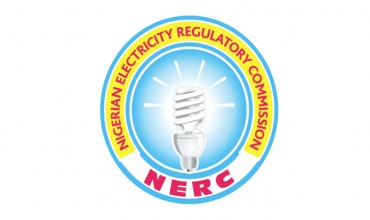NERC: Only 5,506MW of Nigeria’s 13,625MW Wheeled in October
NERC: Only 5,506MW of Nigeria’s 13,625MW Wheeled in October
Fresh data released by the Nigerian Electricity Regulatory Commission (NERC) has indicated that only an average of 5,506 megawatts of installed capacity of 13,625MW electricity reached Nigerian homes at any point in October this year.
This means that the nation’s power generation fleet operated at only 40 per cent availability, far below what is required to support stable supply, the NERC factsheet for the month revealed.
However, despite this, it still represented a marginal 2 per cent improvement from September, symptomatic of long-standing weaknesses across the grid-connected plants.
The commission’s analysis also highlighted a widening gap between what the system can technically generate and what it actually delivers. Despite having 5,506MW available on average, the industry generated only about 4,290 megawatt-hours per hour (MWh/h) during the month under consideration.
This translated to an average load factor of 78 per cent, which NERC noted was unchanged from September. The figures underline the chronic challenges besetting Nigeria’s power sector.
Besides, the month’s performance was driven largely by the top 10 energy producers, which together accounted for about 80 per cent of total generation. The list was dominated by major hydro and gas-fired plants such as Egbin, Delta, Kainji, Shiroro, Okpai, Geregu and Ihovbor.
However, even among the leading producers, performance varied widely, as Egbin, for instance, recorded a plant availability factor of 50 per cent and a load factor of 90 per cent, producing an average of 591MWh/h.
In the same vein, Delta generated an average of 347MWh/h, with an availability of 45 per cent and a load factor of 86 per cent. Kainji stood out with one of the highest load factors at 95 per cent but had a lower availability of 75 per cent.
Zungeru, the newest large hydro plant, posted a perfect 100 per cent availability but ran at a relatively modest load factor of 47 per cent, generating 330MWh/h. Odukpani, the major Calabar plant, had an availability of 31 per cent but still delivered a load factor of 84 per cent, pointing to persistent fuel-related constraints despite efficient operation when online.
Also, Geregu remained one of the most reliable plants in terms of output quality, with a 50 per cent availability and a load factor of 92 per cent, delivering 200MWh/h.
Other grid-connected plants presented an equally uneven picture, with Afam I recording an impressive 91 per cent load factor with 114MW of available capacity, while Geregu II delivered a 64 per cent load factor at 110MW of average availability.
Olorunsogo I and Omotosho I both recorded full utilisation, hitting 100 per cent load factors. But several plants generated nothing throughout the month, including Rivers I, Okpai II and Alaoji I, underscoring long-standing structural issues, unresolved technical faults and contracting disputes.
Beyond generation, the wider grid continued to struggle with voltage and frequency instability. The average lower transmission voltage for the month was 294.55 kilovolts (kV), while the upper voltage averaged 346.90kV. The data showed that both figures breached the prescribed safe limits of 313.50kV to 346.50kV, suggesting persistent over-voltage and under-voltage events across several transmission corridors.
Grid frequency, which is critical to system stability, also remained slightly outside the recommended band. The average lower frequency was 49.46 hertz (Hz), while the upper frequency reached 50.69Hz. Both values exceeded the target operational limits set at 49.75Hz to 50.25Hz.
Checks by THISDAY indicated that sustained excursions outside this range pose risks to sensitive equipment, reduce the lifespan of turbines and transformers, and increase the probability of system-wide disturbances.
Last week, the Minister of Power, Adebayo Adelabu, stressed that although the grid can comfortably transmit 8,500 MW, the nation is currently generating around 5,000MW because there’s a misalignment between the demand and consumption levels in the country.

